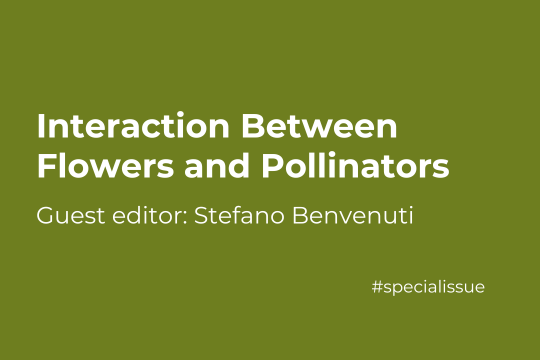The ecological aspects of plants–pollinators interaction have become increasingly crucial in biodiversity conservation. Indeed, the biological complexity and resilience of natural and anthropized ecosystems, subjected to increasing climate change, represent some of the most important ecological challenges of the new millennium. While the protection of flora and fauna in natural ecosystems can be allowed by the creation of natural parks, it is necessary to evolve eco-compatible management in the agroecosystem that limits the feedback rarefaction of both plants and their pollinators.
The fascinating mutualism between flora and pollinators is much studied, but many aspects remain explored in terms of the chemical (scents and nectar composition) and physical (shapes and colors of the corollas) strategies of both: i) selective attraction and ii) the repulsion of unwanted insects.
The risk of the rarefaction and/or extinction of both plants and pollinators is not random but depends on the degree of mutual specialization. Examining these interactions in greater detail (generalist or specialized) will make it possible to plan land management strategies that aim to enhance the survival of the most threatened species. All agronomic strategies capable of promoting both the level of biodiversity (wildflowers–pollinators) and the related aesthetic impact should also be addressed. It is also important to investigate whether and to what extent common, predominantly autogamous or anemogamous weeds can constitute an occasional source of pollen and/or nectar in the absence of typical entomogamous species. It is also important to verify the eventual gene-flow mediated by poorly or non-specialized insects commonly referred to as nectar–pollen predators.
In summary, this Special Issue aims to compile the skills of agronomists, botanists, entomologists, chemists and ecologists in order to provide basic and applied knowledge that can inspire biodiversity conservation strategies.
Original research articles and reviews are welcome. The scope of this Special Issue includes, but is not limited to, the following topics:
(I) Plant-pollinator interaction and co-evolution;
(II) Agronomic strategies to enable the conservation of biodiversity;
(III) Pollination efficiency of generalist and specialized pollinators;
(IV) Ecosystem services provided by plant-pollinator mutualism;
(V) Aesthetic sustainability of wildflower landscapes.

